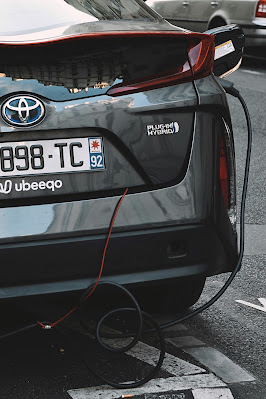How do hybrid cars work.
Hybrid
cars are a combination of traditional gasoline-powered vehicles and electric
vehicles. These cars have become increasingly popular in recent years due to
their fuel efficiency and reduced secretion. In this blog, we will discuss how do hybrid cars works, their benefits,
and the different types of these cars available in the market.
The
basic idea behind a hybrid car is to combine the benefits of both electric and
gas-powered vehicles. A hybrid car has a conventional internal combustion
engine (ICE) and an electric motor. The ICE runs on gas and provides the power
needed for acceleration, while the electric motor provides additional strength
and recharges the battery. The battery provides power to the electric motor and
stores energy generated by the car's braking system.
How hybrid cars work.
The
two power sources work together to drive the car. When the car is accelerating,
both the ICE and electric motor provide power. When the car is coasting or
slowing down, the electric motor acts as a generator and recharges the battery,
while the ICE turns off. When the car is stopped, the ICE turns off entirely,
and the electric motor provides power for accessories like the air conditioner
and radio.
The
main benefit of a hybrid car is improved fuel efficiency. Since the electric
motor provides additional power and the battery helps to store energy generated
by the car's braking system, the ICE doesn't have to work as hard. This reduces
fuel consumption and secretion. In addition, when the car is stopped, the ICE
turns off entirely, further decreasing fuel consumption.
Another
benefit of hybrid cars is reduced secretion. Traditional gas-powered cars
release pollutants like nitrogen oxides, carbon monoxide, and particulate
matter into the air. Hybrid cars release significantly less of these pollutants
because the electric motor provides power, decreasing the need for the ICE to
run.
There are two main types of hybrid cars: parallel hybrids and series hybrids. In a parallel hybrid, the electric motor and ICE work together to drive the car. The driver can switch between electric and gas power, or the car can automatically switch between the two. In a series hybrid, the electric motor is the primary power source and the ICE acts as a generator to recharge the battery.
 |
| Hybrid car |
Parallel
hybrids are the most common type of hybrid car and are typically designed for
use in urban areas. They are ideal for short trips, as the electric motor
provides power for low-speed driving. This reduces the need for the ICE to run,
which in turn reduces fuel consumption and secretion.
Series
hybrids are designed for use in rural areas, where there are longer distances
between stops. In a series hybrid, the electric motor provides power for
acceleration and recharges the battery while the ICE acts as a generator. When
the battery is depleted, the ICE takes over and provides power for the car.
 |
| Toyota Hybrid Car |
There
are also plug-in hybrids, which are a type of parallel hybrid. Plug-in hybrids
have a larger battery and can be charged using a standard electrical outlet.
This allows the car to be driven on electric power alone for short distances,
decreasing the need for gasoline and further decreasing secretion.
In
conclusion, hybrid cars are a combination of traditional gasoline-powered
vehicles and electric vehicles. They have a conventional internal combustion
engine and an electric motor that work together to drive the car. The main
benefits of hybrid cars are improved fuel efficiency and reduced secretion.
There are two main types of hybrid cars: parallel hybrids and series hybrids,
and there are also plug-in hybrids. Whether you are looking for a more
fuel-efficient car or simply want to reduce your carbon footprint, a hybrid car
may be the right choice for you.
